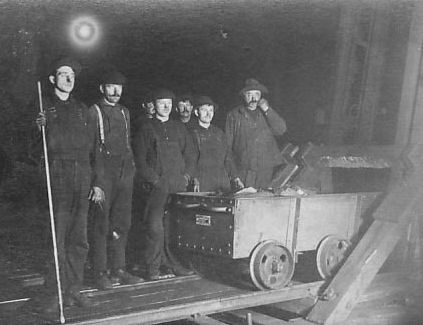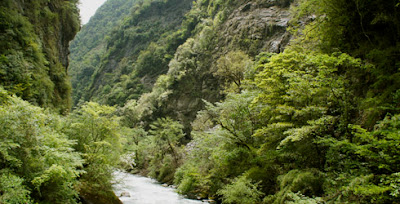The Adirondacks is one of the most fascinating geological dig sites, which helped open the early Adirondacks to exploration, travel and trade. Around 250,000 years ago, glaciers dominated the lands, putting pressure on the ancient rocks that had formed over 750 million years prior. People of the 19th century discovered deposits of iron ore, used to make steel, and garnet, a prosperous gemstone. By the peak of the American Civil War, Adirondack mines accounted for 25% of America's iron production, and were critical for providing Union troops with weapons and bullets. Immigrants from around the globe moved to the Adirondacks to work in one of several mines that sprouted up in various areas. Often, each worker would bring their family and culture with them, and recreational activities including baseball spread into the Adirondacks. While many of these mining towns have since disappeared, they contributed to bringing people from various ethnic backgrounds into the Adirondacks.
 |
| Witherbee Sherman Mine, Mineville, NY |
 |
| Clinton Iron Ore Mines, Clinton, NY |
While in cases such as mining, the geology of the Adirondacks have brought more people to the park, the geology of the Adirondacks has also prevented many young and hopeful people from living in the Adirondacks due to the poor soil quality. The glaciers of the last ice age ripped the soil from the ground in the park, leaving behind a relatively young soil. Typically, Adirondack soil is thin and sandy, subjecting it to a higher potential for drought. Additionally coniferous trees that grow in much of the park leave the soil acidic and make it infertile for crops. In addition, Adirondack soil can be quite rocky, and the extreme climate can contribute to crop failure. Many young farmers who moved to the Adirondacks and tried to live off of the land forfeited that lifestyle to Mother Nature within their first few years, leaving only the toughest and luckiest farmers to work the land.
Clearly, the geology of the Adirondacks has played a large role in dictating who could live where and what sort of work would be possible. In addition to encouraging and limiting human settlement, the geology of the Adirondacks has continued to impact flora and fauna, especially aquatic fauna in the case of acid rain. Many lakes and ponds in New York State have a low sensitivity to acid rain due to the limestone deposits underneath the water that provide a calcium pH buffer to counteract the acid. However, bedrock found in the Adirondacks tends to be poor in limestone, and lack the ability to buffer acid rain. A recent study has found that of 1,245 Adirondack lakes surveyed, 319 of them were too acidic to support fish life. This is a serious concern for the local food chain and fishermen, which may have once relied on fish.

The geology of the Adirondacks has shaped the people, economy and ecology inside the park, for better or worse and has helped turn the park into what it is today.
Sources:
http://apa.ny.gov/about_park/geology.htm
http://www.adkmuseum.org/about_us/adirondack_journal/?id=365
http://www.miningartifacts.org/NewYorkMines.html
http://www.dec.ny.gov/chemical/283.html
http://www.nytimes.com/1988/07/07/nyregion/acid-rain-imperils-adirondacks-fish.html






